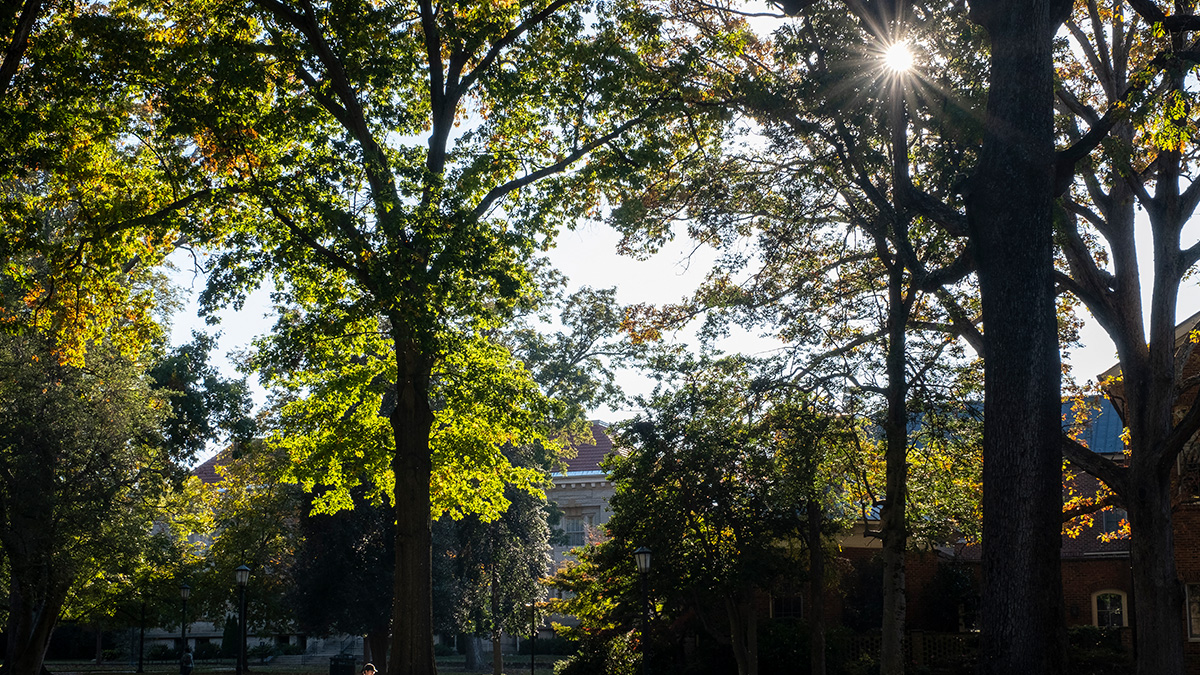Keeping high-performing teachers in the classroom
UNC School of Education professor Matthew Springer found that a key to improving struggling schools could be paying retention bonuses to teachers.

Matthew Springer, the School of Education’s Robena and Walter E. Hussman Jr. Distinguished Professor of Education Reform, studies education policies and innovations, with a particular focus on the role accountability, incentives and compensation in the education sector.
Springer and two of his colleagues, Luis Rodriguez of New York University and Walker Swain of the University of Georgia, have written a pair of studies, one recently published in the academic journal Educational Evaluation and Policy Analysis and another forthcoming in the Economics of Education Review, that examined the impact of a novel selective retention bonus program designed to retain highly effective teachers in traditionally low-performing schools.
Springer and his colleagues sought to find out: Does paying retention bonuses to teachers in struggling schools help keep high-performing teachers in the classroom? Does the retention of these high-performers help improve student outcomes?
 Why are these studies important?
Why are these studies important?
The inequitable distribution of highly effective teachers among schools with different levels of student poverty is arguably one of the greatest educational inequalities of our time. Most public schools differ in attractiveness as places to teach, with schools that have higher concentrations of low-income and low-performing students being perceived as more challenging, less desirable places to work. Yet flat teacher salary schedules ensure teachers working in these high needs school make no more than those in relatively less challenging lower poverty schools. As a result, these students are exposed to higher teacher turnover and lower quality instruction.
Our studies offer an important glimpse into the potential for selective retention bonuses, i.e., bonuses for highly-effective teachers to stay in traditionally underserved school settings, to promote more equitable access to effective instruction.
Our studies also highlight the relative merits of positive incentives that seek to reward, recognize and retain effective educators over punitive accountability policies that target ineffective teachers for dismissal or counseling-out, in which a teacher is urged to leave their job. Given that fired and departing teachers are likely to be replaced with new, inexperienced teachers, retention of high-performing teachers in low-performing schools is paramount. Our work suggests that strategic retention bonuses can be a valuable tool in achieving this end.
What were the main things that you found?
We show that the offer of selective retention bonuses to the highest-rated teachers in the lowest-rated schools succeeded not only in increasing retention of highly-effective teachers in tested grades and subjects, but also in substantially elevating student performance in subsequent school years, especially in reading. We also demonstrate that a $5,000 retention bonus offered a cost-effective strategy for retaining high-performing teachers in these traditionally underserved school settings.
Why is this important for educational policy and practice?
Our findings are particularly important when we consider the teacher most likely retained as a result of the selective retention bonus program in relation to the average teacher that would have been hired to replace them. The average teacher produces one year worth of academic growth in their students, which places them at the 50th percentile of a typical performance distribution. The average teacher retained as part of the bonus program is at the 84th percentile of the teacher effectiveness distribution, while the average teacher hired to replace them is at the 25th percentile. Juxtaposed to prominent school turnaround policies that require low-performing schools to fire large portions of their faculty, this retention-oriented model represents a paradigm shift for school improvement policy.
Teachers are the single most important within-school determinant of student learning, yet student’s exposure to the most highly-effective educators can be a function of the neighborhood in which they live and the school to which they are assigned. Since we also find that the retention of these highly-effective educators substantially elevated student performance in subsequent years, it is likely these types of programs can help alleviate persistent racial and poverty-related achievement gaps.
What additional research questions need to be examined?
We need to learn more about the design and implementation of strategic compensation plans. What is the optimal size of a retention bonus? Should bonuses differ by teaching field to respond to external labor market conditions and allow for greater overall cost effectiveness? We also need to recognize that additional pay alone may be inadequate to overcome pressures to leave, and only affects the underlying learning and working conditions to the extent that retained teachers improve the culture in the building.
Research needs to examine the roles of non-pecuniary incentives, and the interactions between conditions and simple salary improvements. Ultimately, policies that improve working conditions and better integrate student populations across schools (thus minimizing the concentration of economic disadvantage) may also be needed to support the stability and equitable distribution of effective instruction.




